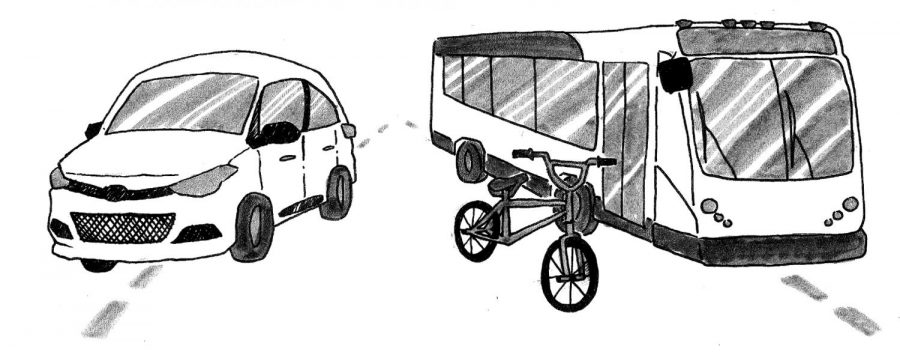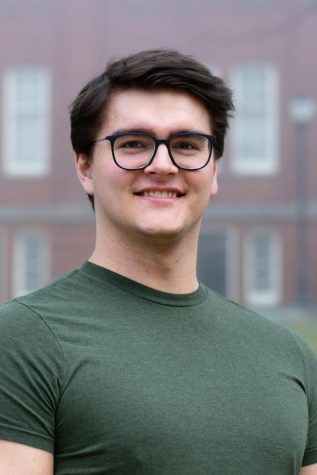Use alternative transportation
Students, faculty need to carpool, ride bus, bike to relieve congestion
ALONI MARTIN | The Daily Evergreen
Buses, bikes, automobiles and pedestrians — students, staff and faculty have a variety of options when making their way to campus every day, but as the university’s population rises and space becomes tight, will WSU invest in more parking lots, bike racks or buses?
October 19, 2017
Finding parking on campus is difficult for many students, but there are a number of substitutes to driving that can help reduce congestion without needing to add more parking lots. While driving to school might be convenient, using alternatives modes of transportation can be just as effective as commuting via car.
One of the main issues that causes an increase in the demand for parking, is known to Transportation Services as “ride-alones.” These are students and staff who drive alone and occupy a parking spot without carpooling. This practice is unavoidable for some, but severely limits the number of permits available for each parking zone.
“We don’t endlessly sell permits. We manage them carefully so people can find a space in their zone of choice,” John Shaheen, director of WSU Transportation Services, said. “Right now, overall we have localized shortages of parking, but overall, we have enough parking to accommodate everyone who would want to park, although they may not get their first choice of permit.”
Carpooling makes each parking spot more efficient by increasing the number of people that can make use of them. If multiple people can share a space through carpooling, that opens up other spaces for students and staff in the same zone.
Students must be flexible on the issue of parking, due to some of the limitations of the current situation. Using transportation alternatives may not be convenient for everyone, but that is an issue that can be mitigated by simple efforts and sacrifices. Waking up earlier to catch a bus, or ride a bike, is a small price to pay when compared to the money saved by not buying a permit and not paying for gas.
“In terms of the transportation alternatives outside of parking,” Brent Atkinson, coordinator of Transportation Demand Management, said, “there are benefits particularly toward the user, of riding the bus, walking and carpooling, in terms of saving money and reducing congestion.”
Most places off campus where students live are well within convenient biking distance and carpooling can be easily managed by off-campus residents who live with one or more roommates.
“There are bike trails all over the cities of Pullman and Moscow, and this is a pretty expansive collection of trails for both commuting and the recreational rider,” Shaheen said.
Transportation Services is working toward making WSU more bike-friendly and encouraging students to bike to and around campus. Their efforts include replacing old bike racks and looking for more places where bike trails could be expanded around campus.
However, the department is limited by funding shortages. “We have to help people understand that we are managing a scarce resource and we are a self-funded department. For us to do what we do, we have to charge for parking to finance the system. There is no state money or tuition money that supports us,” Shaheen said.
Because they are funded by the permits they sell, the amount of money that can be dedicated to projects is limited. This is also the reason for recent parking permit price inflation.
Ultimately, the goal of Transportation Services is to facilitate diverse methods of commuting around WSU and Pullman and to make students feel like they are not locked into one method of transportation. The WSU community is capable of managing the limitations of this parking situation without needing to dedicate more space and money to parking lots on campus.






















